About 1275 CE a group of American Indians, called Mogollon by archaeologists, constructed a small pueblo (village) in some cliffs in what is now New Mexico. The small pueblo was constructed in a rugged, steep-sided canyon, at an elevation of 5,700 to 6,000 feet. The pueblo consisted of about 46 rooms which were constructed in five caves. Archaeologists estimate that the pueblo was occupied by 10 to 15 families.
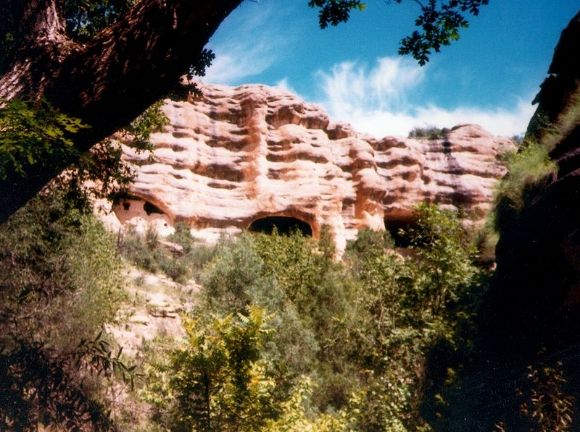
The cliff dwellings shown from below.
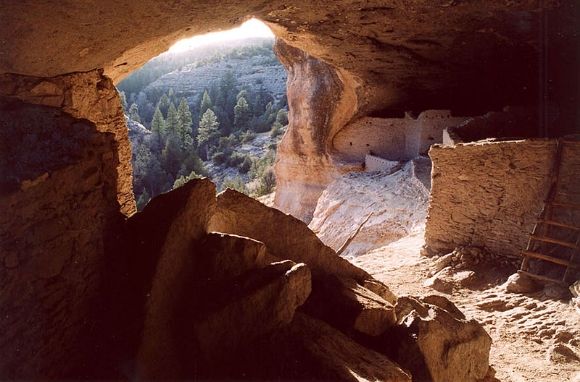
Shown above is the interior of one of the caves.
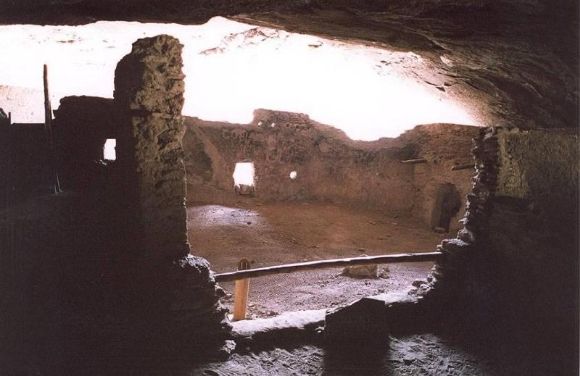
Shown above is a National Park Service photo of the interior of one of the rooms.
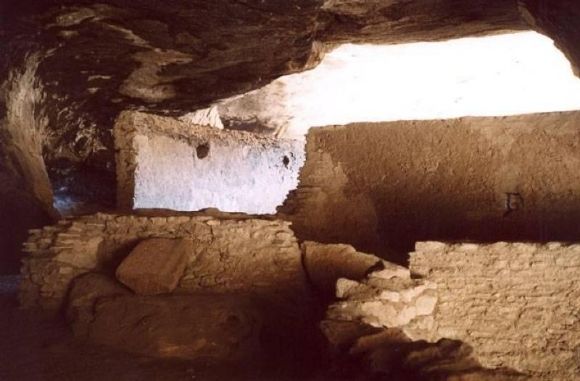
Shown above is another room interior photograph from the National Park Service.
Mogollon emerged as an archaeologically identifiable culture in Arizona and New Mexico about 200 CE. During the early period, from 200 to 1000, they lived in deep pithouses which were grouped into small multi-family villages. Around 1000 CE, they began to build above-ground masonry pueblos. At this time the villages also become larger, an indication of improved agriculture.
Economically, the Mogollon were engaged in hunting wild game, gathering wild plants, and raising some plants. At the Gila Cliff Dwellings, the people used some irrigated agriculture.
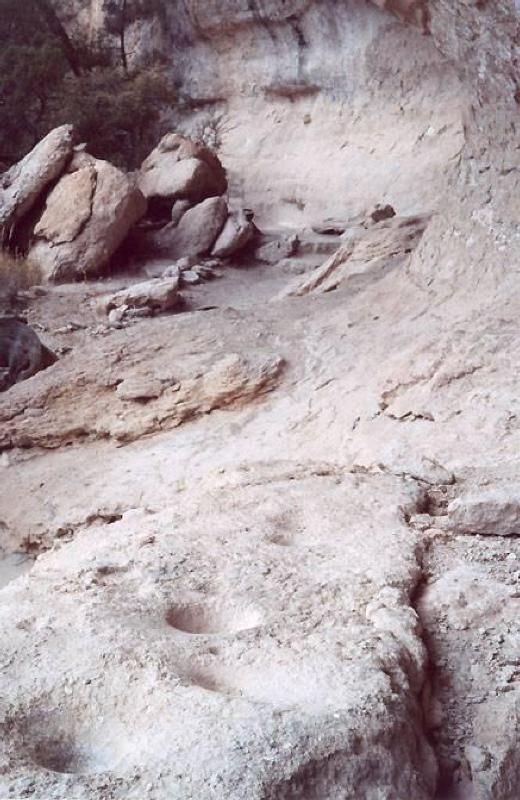
The holes in the rock shown above are bedrock mortars which were used by the Mogollon people for grinding corn as well as wild seeds. This is a National Park Service photo.
The Gila Cliff Dwellings are on the periphery of the Mimbres branch of Mogollon culture. Mimbres is well-known for its pottery with realistic images of animals, plants, and bugs. The Gila Cliff Dwellings were looted before the creation of the National Monument. This means that much valuable information about the connections between Mimbres and other cultures has been lost.
About 1300 CE, the Mogollon people abandoned the Gila Cliff Dwellings. Hopi oral traditions tell of migrations at this time due to changing climate. After the cliff dwellings were abandoned, the Apache occasionally entered the area after 1400 CE, but did not disturb the dwellings. The Apache presence in the area is recorded in the archaeological record with a single pictograph, a few pottery shards, and a burial which was vandalized by non-Indians.
The National Monument
The Gila Cliff Dwellings were first discovered by non-Indians in 1878 and by the 1890s, entrepreneurs were taking tourists to see the ruins. Tourists were “collecting” souvenirs from the ruins, including a couple of mummified bodies. Peter Russell, in his administrative history of the Gila Cliff Dwellings National Monument, writes:
“Unfortunately, within six years of the first recorded visit to the ruin in 1878, the site was thoroughly rifled.”
In 1906, the Gila Forest Supervisor reported to the chief forester in Washington, D.C. that the cliff dwellings warranted preservation to prevent further removal of artifacts by tourists, hunters, and prospectors. The Gila Cliff Dwellings National Monument was established by President Theodore Roosevelt in 1907 under the 1906 Antiquities Act.
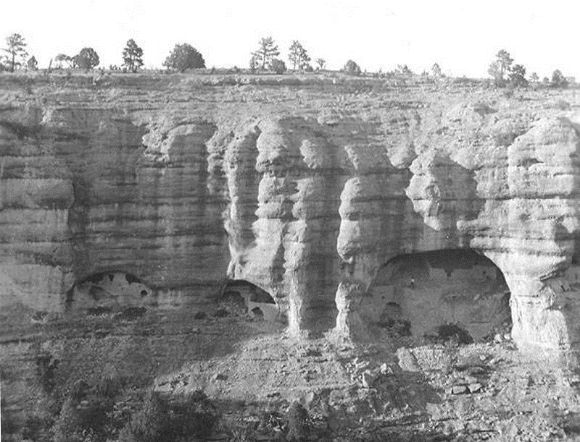
Shown above is a 1914 photograph of the Gila Cliff Dwellings from the National Park Service.


